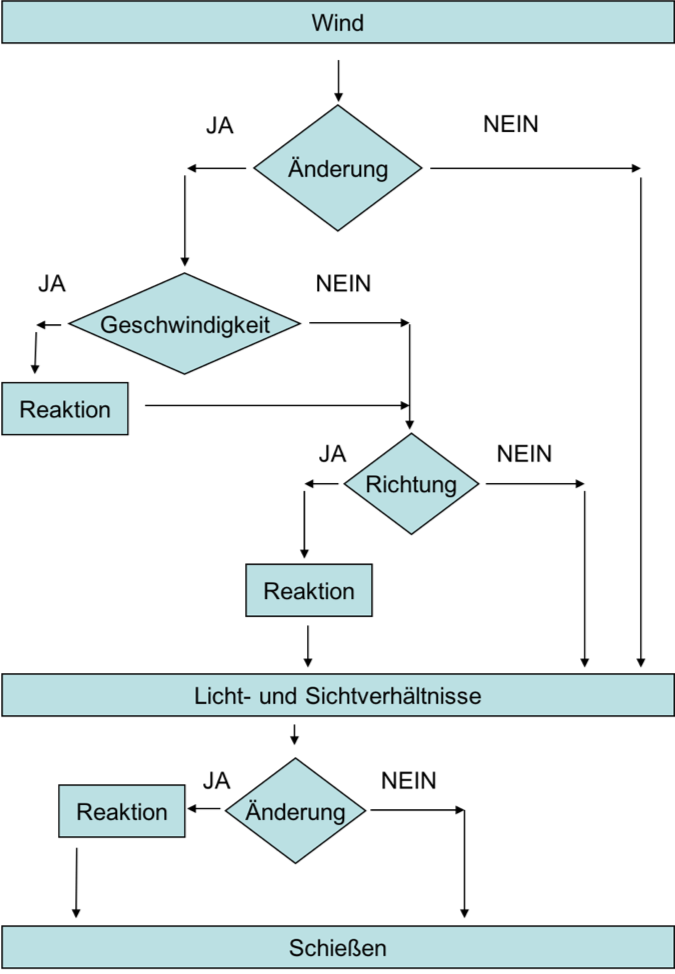This post starts a short series on the practical application of the knowledge gained from previous posts on weather conditions.
Principles
Standard reactions should be understood to mean that athletes can apply rules of thumb combined with a flow chart after assessing the weather conditions during the run-up phase of the range visit, in order to be able to react correctly when needed under the expected competition stress.
In this regard, it can first be noted that in this assessment, a possible change in air temperature, humidity and atmospheric pressure none must play a role. These factors are compensated by the shooting or are lost in the scattering generated by the athlete himself.
This means that the wind conditions as well as the light and visibility conditions must be considered further. Appropriate rules of thumb must be developed for these.
As has become clear from the previous considerations, it is not the absolute wind values or light and visibility conditions that are important, but rather their change
- from zeroing to competition and
- within the competition from shooting to shooting
of importance, since the absolute prevailing conditions are taken into account during the zeroing and are then also partially lost in the shooter scatter.
In this article, the flow chart for the implementation/application of the rules of thumb will be discussed first. The further contributions will then deal with the respective procedure for the change of wind or light and visibility conditions in order to be able to derive the rules of thumb.
Flowchart
If the athlete encounters a change in wind and/or light and visibility conditions when approaching the shooting range, he may have to react to this with an adjusted sight setting. For this purpose, it is necessary to evaluate the possible deviations in their effects and to determine correction values for the sight adjustment in side and/or height. In addition, these must then also be set correctly. All this happens under high physical and mental stress.
The effects are then all too often, for example, the setting of actually correct correction values in the wrong direction or the determination of incorrect values. Frequently, however, a combination of different errors occurs when correcting the sight setting. The athletes can then no longer understand their shooting result. It is not uncommon for the support staff to have difficulties in understanding the result and giving corrective advice.
Therefore, I would like to suggest here to apply the presented flow chart. The aim is to work sequentially through the questions shown and to carry out the individual corrections one after the other, without offsetting each other. The application should help to further minimize the sources of error. The Reaction field represents the application of the necessary rule of thumb, which is to be carried out specifically on the sight.

Summary
Consistent application of such a flow chart in training and competition can significantly reduce the sources of error in responding to changes in weather conditions.